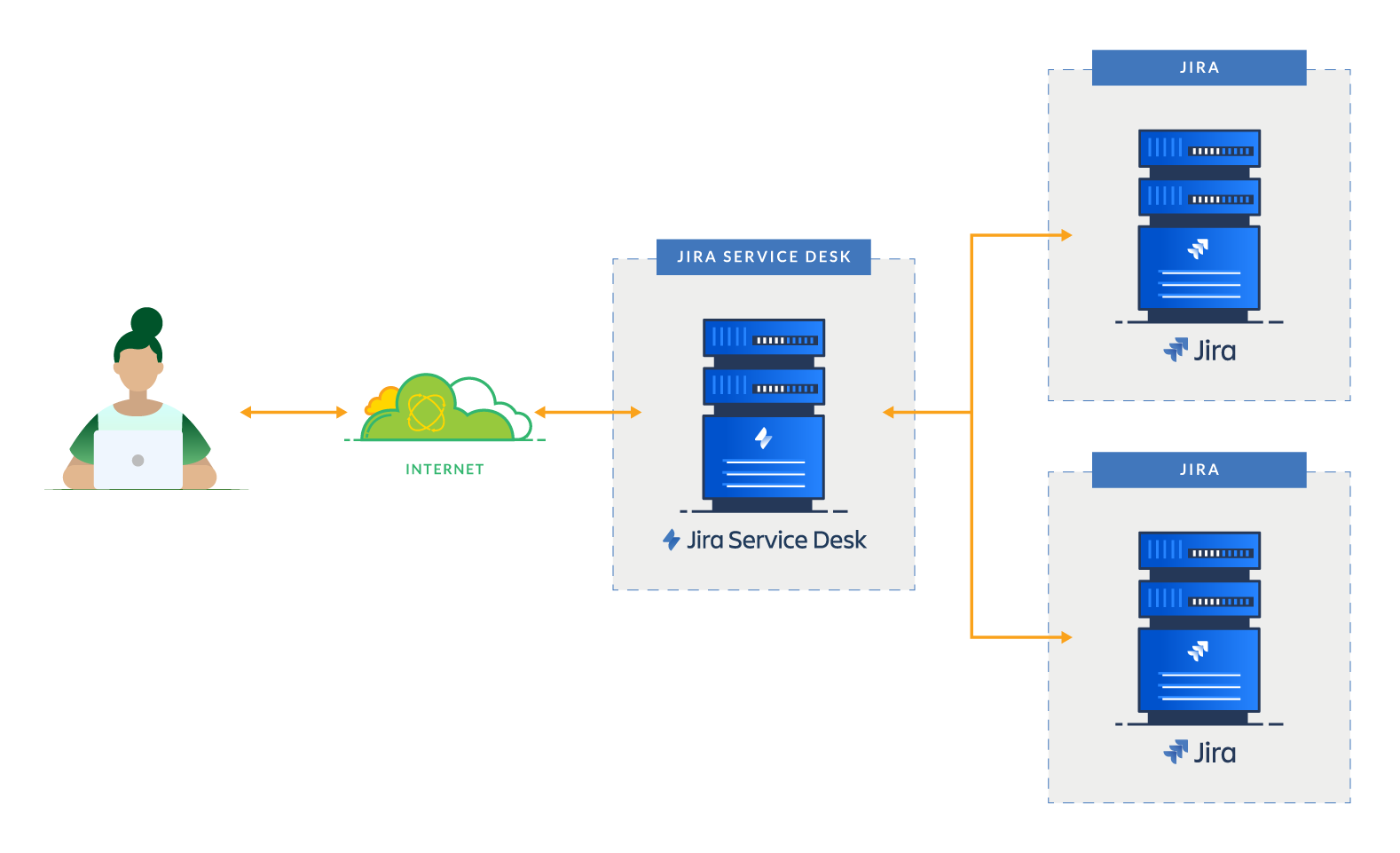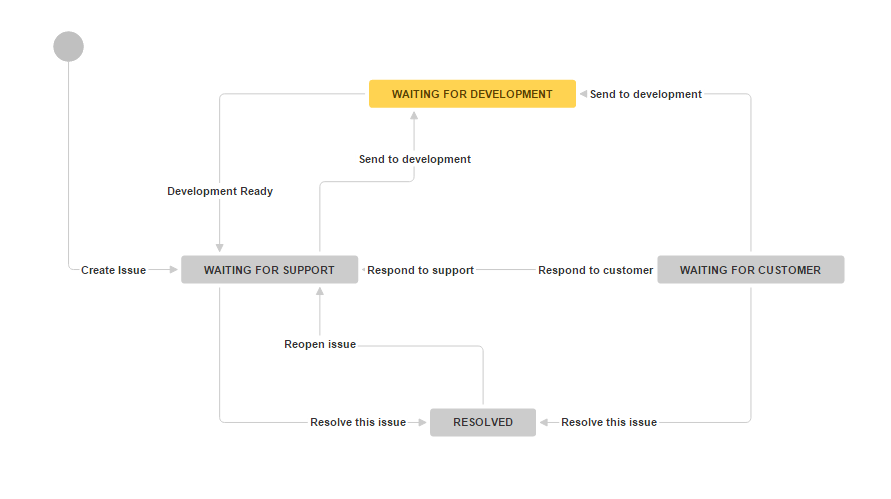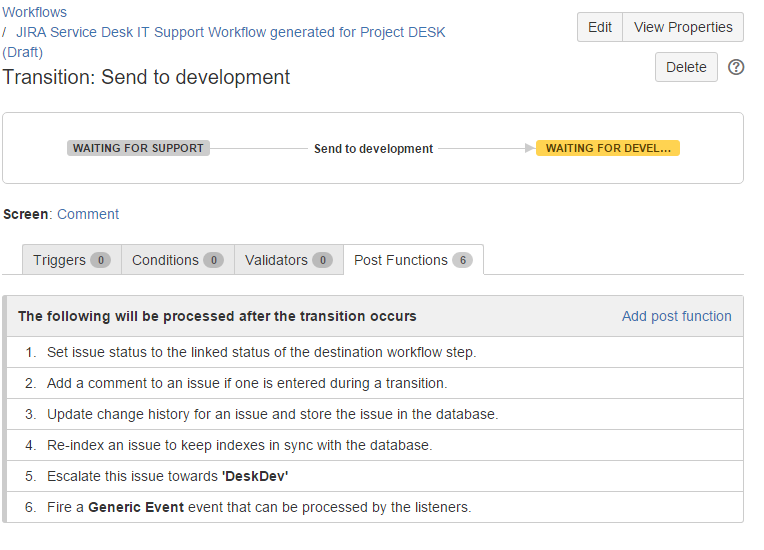Warning: Despite our best efforts, code can change without notice due to a variety of factors. If you encounter an issue in any of the code shown here and find that a specific block of code is not correct, or is causing errors, please check with the Community to find an updated version.
This use case shows how you can connect 2 Jira instances such that one instance is used for servicing customers, and the other for tracking development tasks.

Jira Configuration
To support the Send to development function, the workflow of the Service desk configuration should be slightly changed.

You need to add an Exalate post function to the Send to development transition using the previously created connection DeskDev.

Note: The Exalate post function is the last in the list as the synchronization needs to take all the changes (such as comments) with it.
Sync Rules Setup
Service desk Configuration
Outgoing sync
replica.key = issue.key
replica.assignee = issue.assignee
replica.reporter = issue.reporter
replica.summary = issue.summary
replica.description = issue.description
replica.comments = issue.comments
replica.resolution = issue.resolution
replica.status = issue.status
replica.project = issue.project
replica.attachments = issue.attachments
Incoming sync
if (firstSync) {
return // ignore incoming requests to create issues
} else {
issue.summary = replica.summary
issue.description = replica.description
issue.comments += replica.addedComments
issue.attachments += replica.addedAttachments
//When the development issue is resolved, trigger the development ready transition
if (replica.resolution != null) {
issue.doTransition = "Development Ready"
}
}
Development JIRA Configuration
Outgoing sync
replica.key = issue.key
replica.assignee = issue.assignee
replica.reporter = issue.reporter
replica.summary = issue.summary
replica.description = issue.description
replica.comments = issue.comments
replica.resolution = issue.resolution
replica.status = issue.status
replica.project = issue.project
replica.attachments = issue.attachments
Incoming sync
issue.projectKey = "ACME"
issue.typeName = "Task"
issue.summary = replica.summary
issue.description = replica.description
issue.comments += replica.addedComments
issue.attachments += replica.addedAttachment
//When the remote issue is in status 'waiting for development' and the local issue has been closed, reopen it
if (replica.status.name == "Waiting for development" && issue.resolution != null) {
issue.doTransition = "Reopen"
}
Benefits of a Unidirectional Sync From the Service Desk
Implementing a unidirectional sync between a service desk and a development Jira instance provides several benefits:
1. Faster Ticket Resolution
With an automated sync, service desk agents can escalate development issues with a single action. This streamlines the development workflow, ensuring development teams get accurate, real-time information without back-and-forth communication.
2. Improved Collaboration Between Teams
By keeping the service desk and development teams connected, this integration ensures that both sides remain aligned. Status updates, comments, and attachments flow automatically, keeping stakeholders informed without requiring extra effort.
3. Enhanced Customer Satisfaction
With quicker escalations and streamlined collaboration, development teams can address customer-reported issues faster. This leads to a more responsive service desk, reducing ticket resolution times and improving customer experience.
Have more questions? Ask the community